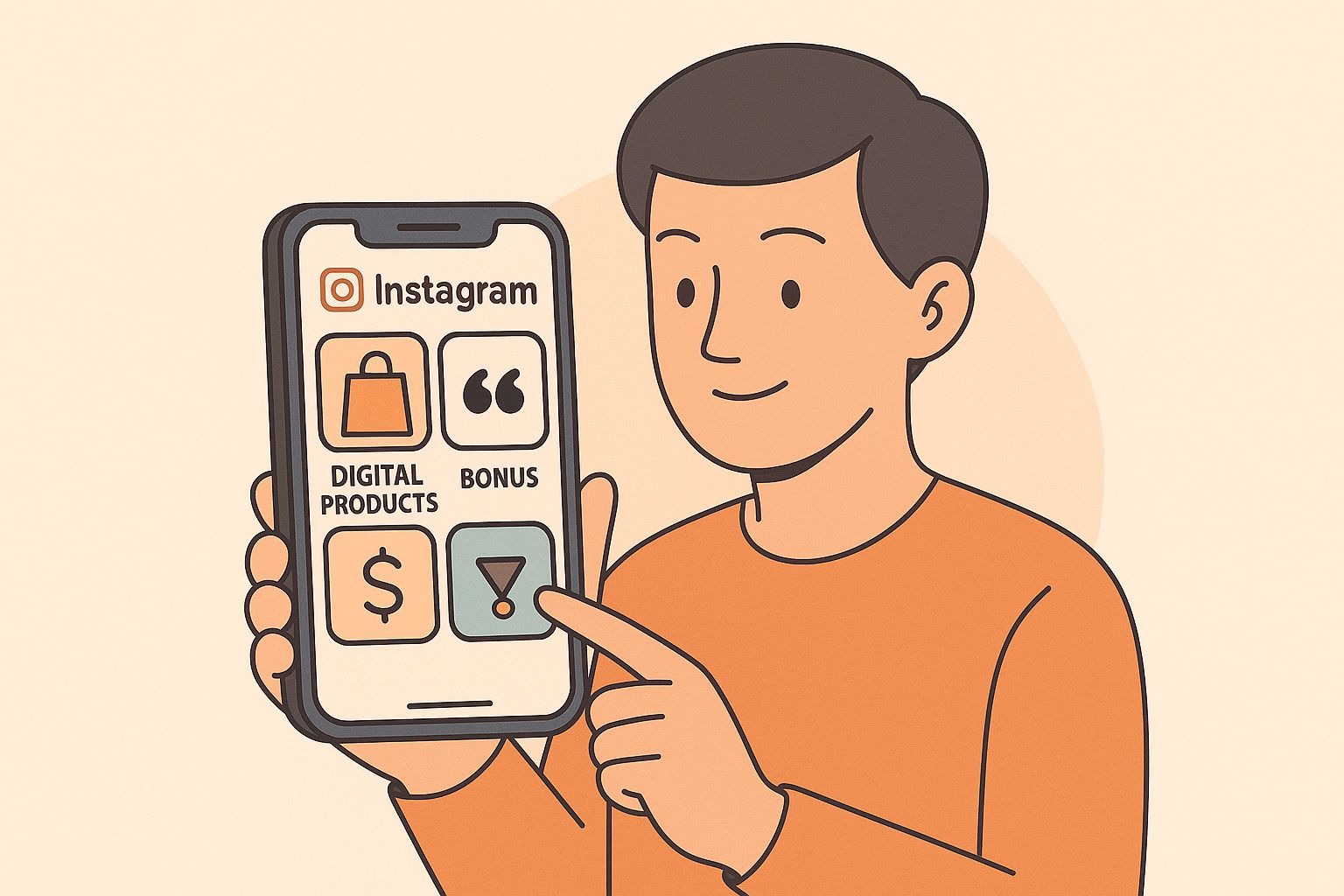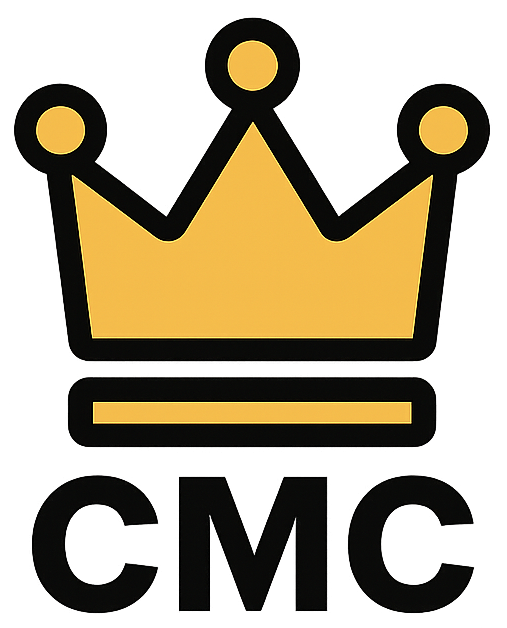How People Are Actually Making Money on Instagram in 2025
Most Instagram monetization advice feels out of touch or outdated.
So I went digging through real conversations where creators shared exactly how they’re making money right now—from affiliate marketing and faceless quote pages to low-effort digital product sales.
What I found was a mix of clever hustle, simple systems, and people quietly stacking income without ever going viral.
In this guide, I’ll break it all down with:
-
The most common monetization methods people are using today
-
What’s working for beginners vs experienced creators
-
Specific examples from real users
-
Smart tools that help you monetize without burning out
You don’t need a massive following.
You need a system that matches your skills, your time, and what people are willing to pay for.
Let’s get into it.

Affiliate Marketing That Doesn’t Feel Spammy
Let’s get this out of the way first—affiliate marketing still works on Instagram.
But the way people approach it has changed.
Instead of spamming links to random products in bios or stories, creators are becoming selective and strategic. They promote products they actually use or have tested, and they wrap those recommendations into useful content.
Here’s how real users are doing it:
-
One creator mentioned they only promote tools that helped them personally. No random junk.
-
Another sells high-ticket affiliate products, earning $3,000+ from a single sale. They focus on connecting a buyer with a real solution, not chasing volume.
-
Some use Instagram to funnel traffic into other channels—email lists, blogs, or YouTube—where longer-form affiliate content converts better.
The key difference?
These creators treat Instagram as a discovery tool, not a sales page. They build trust with their audience through:
-
Educational content (e.g. how-tos, product comparisons)
-
Lifestyle or testimonial-style Reels
-
Story-based tutorials with soft mentions of the product
You’ll also see creators pairing Instagram with Flick, a tool that helps schedule content, find trending hashtags, and optimize posts for reach. It saves time and boosts visibility—perfect for those running affiliate campaigns solo.
Pro tip: If you’re starting out, pick just one product you love. Build a simple content plan around it. You don’t need 10 different links to start making commissions.
Selling Digital Products From Your Phone
One of the most popular methods is selling ready-made digital products—ebooks, guides, templates—through Instagram.
Here’s why this model works:
-
You create the product once
-
You sell it over and over again
-
You keep 100% of the profit (if it’s your own)
What surprised me was how simple it is to get started.
Many creators mentioned using Canva to build out:
-
7-day meal plans
-
Business checklists
-
Beginner workout guides
-
Digital planners and journals
-
Instagram growth templates
These are often packaged as PDFs and promoted in posts, stories, or Reels. Some give away one product for free to build an audience or email list, then upsell more advanced versions later.
A comment that stood out explained why people still buy these:
“Yes, you can find all this stuff online for free. But people don’t want to spend hours searching. They want a clear, done-for-you solution they can start using today.”
One creator even mentioned never showing their face and still selling products just by understanding what their audience needs—and offering it in a clean, no-fluff way.
If you’re new to this:
-
Think of one problem you’ve solved for yourself
-
Package the solution into a small, actionable product
-
Promote it consistently using value-first content
Instagram works well as a funnel to these kinds of products. Combine it with tools like Systeme IO to set up your store, email sequence, and sales page—all in one place.
Faceless Quote Pages Are Quietly Killing It
If you think you have to show your face to make money on Instagram, think again.
One of the most surprising responses came from a creator in the faceless quote page niche. Here’s how their setup works:
-
They run a niche quote page with empowering, motivational content.
-
Every post is designed to speak directly to a target audience (e.g. people who want to start a side hustle or escape 9–5 life).
-
They joined a private course/hub that gave them:
-
Done-for-you digital products (guides, stock reels, templates)
-
PLR/MRR licenses so they can resell the content as their own
-
An affiliate program to earn commissions on the course itself
-
They promote the products using smart content, often recycled and repurposed using stock visuals and pre-written captions. Then they direct followers to links in bio, pinned comments, or stories.
It’s hands-off, scalable, and doesn’t require personal branding.
Quote pages grow fast when they post consistently. They benefit from repost culture—followers are more likely to save and share quotes than selfies.
Why this works:
-
You build an audience without showing your face
-
You monetize in multiple ways: digital products + affiliate commissions + shoutouts
-
You can automate the posting process with scheduling tools and use proxies to safely manage multiple pages if needed
This approach is popular among people who prefer staying behind the scenes. You only need a sharp niche and a consistent content loop.
Funnels That Sell Without Feeling Salesy
Some creators have turned Instagram into a full-on sales machine.
They do this by building funnels—simple customer journeys that move followers from interest to purchase without the pressure of a hard sell.
Here’s a setup that came up in the thread:
-
Lead magnet
They offer a freebie (like a mini-guide or checklist) in exchange for an email. -
High-ticket offer
Their email sequence introduces a coaching program, course, or digital product bundle. -
Downsell option
If the follower doesn’t bite, they’re offered a cheaper product instead.
Instagram is the entry point. They create curiosity-driven Reels, story polls, or carousels that highlight a pain point—and the solution leads to their link in bio.
One user said they run paid ads to boost their Instagram reach, then route followers into this funnel. Others let Instagram grow organically and use posts as soft pitches.
A few creators said they use Systeme IO (again) to build these funnels—it handles everything from landing pages to emails to sales tracking without extra software.
What’s interesting is that these funnels don’t scream “sales.” Instead, they feel like:
-
Helpful tutorials
-
Behind-the-scenes lessons
-
“Here’s how I did it” posts
It’s a content-first approach with a clean backend that quietly brings in sales 24/7.
Clipping.io and Other Low-Lift Monetization Tools
Not every income stream on Instagram requires selling or even creating content from scratch.
One reply pointed to Clipping.io, a platform that lets creators earn money by adding small branded elements—like a logo or watermark—to their videos.
Here’s how it works:
-
You sign up and browse open campaigns
-
Some campaigns ask you to add a logo to the bottom of your videos
-
Others may ask you to use a certain background sound or mention a product
-
Once your content starts getting views, you earn per impression
One user claimed they earn around $1,000/month just from this.
There are no upfront costs, and it works with Instagram, TikTok, YouTube, and other platforms. It’s best for those who already post content consistently and want to layer in passive income without changing their style or message.
This model is ideal if you:
-
Don’t want to sell or promote anything directly
-
Already have decent engagement or regular posting habits
-
Want an extra income stream that scales quietly
As Instagram leans more into video (especially Reels), expect tools like this to become more common.
Building a Brand First, Monetizing Later
Not everyone in the thread was rushing to monetize.
Some offered a more long-term, creator-first perspective—focus on building a niche brand that resonates deeply with an audience, and let monetization come second.
This mindset flips the usual “how do I make money fast?” approach.
One person said it best:
“The best way to make money is to be a creator. Build a niche community, build a brand, partner with brands, and keep growing. Don’t buy followers. It’s a lot of work.”
That’s not glamorous advice—but it’s smart.
These creators tend to:
-
Focus heavily on value-driven content
-
Get clear on who they’re speaking to and why
-
Say no to short-term promos that could hurt long-term trust
Once they have that brand and audience in place, monetization becomes easier:
-
Brands reach out for sponsored deals
-
Affiliate offers convert better
-
Product launches have built-in buyers
If you’re playing the long game, this is where Blaze AI can help. It’s an AI tool for planning content, writing captions, and keeping a consistent brand voice—great for creators managing everything solo.
The takeaway here?
Don’t just chase money. Build something worth following, and the money follows.
The Layered Approach: Stack Your Income Streams
The smartest creators aren’t sticking to one monetization method—they’re stacking several.
Across the Reddit thread, many users were doing a mix of:
-
Selling digital products
-
Promoting affiliate offers
-
Running paid campaigns via Clipping.io
-
Coaching or consulting
-
Driving traffic to external platforms (Etsy, Threads, blogs)
-
Using funnels to capture leads and offer both high- and low-ticket products
-
Growing faceless or niche pages that sell shoutouts and done-for-you guides
This layered strategy reduces risk. If one stream slows down, another picks up.
It also creates more surface area for monetization. For example:
-
A Reels viewer might click your bio and join your email list
-
Someone on your list might later buy your $17 template
-
Then upgrade to your $97 course
-
And maybe refer a friend using your affiliate link
Each layer adds revenue—and trust.
The trick is not doing everything at once.
Start with one stream. Build it until it runs smoothly. Then add the next.
Final Thoughts
Instagram monetization in 2025 is more diverse—and more accessible—than ever.
You don’t need to be famous. You don’t need to show your face. You don’t even need a huge audience.
But you do need:
-
A clear value offer
-
A consistent way to deliver it
-
A system for capturing and converting attention
Whether it’s affiliate marketing, digital products, or faceless funnel pages, the tools are there. The path you choose should fit how you like to create—and how your audience likes to buy.
You’re not too late to start.
You’re just in time to do it better than most.
